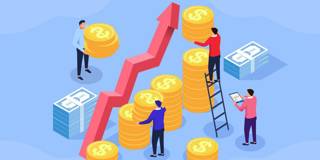Lost in the debate over whether today's ultra-loose fiscal and monetary policies will trigger painful inflation is the broader risk posed by potential negative supply shocks. From trade wars and de-globalization to aging populations and populist politics, there is no shortage of inflationary threats on the horizon.
NEW YORK – There is a growing debate about whether the inflation that will arise over the next few months will be temporary, reflecting the sharp bounce-back from the COVID-19 recession, or persistent, reflecting both demand-pull and cost-push factors.
Several arguments point to a persistent secular increase in inflation, which has remained below most central banks’ annual 2% target for over a decade. The first holds that the United States has enacted excessive fiscal stimulus for an economy that already appears to be recovering faster than expected. The additional $1.9 trillion of spending approved in March came on top of a $3 trillion package last spring and a $900 billion stimulus in December, and a $2 trillion infrastructure bill will soon follow. The US response to the crisis is thus an order of magnitude larger than its response to the 2008 global financial crisis.
The counter-argument is that this stimulus will not trigger lasting inflation, because households will save a large fraction of it to pay down debts. Moreover, investments in infrastructure will increase not just demand but also supply, by expanding the stock of productivity-enhancing public capital. But, of course, even accounting for these dynamics, the bulge of private savings brought by the stimulus implies that there will be some inflationary release of pent-up demand.

NEW YORK – There is a growing debate about whether the inflation that will arise over the next few months will be temporary, reflecting the sharp bounce-back from the COVID-19 recession, or persistent, reflecting both demand-pull and cost-push factors.
Several arguments point to a persistent secular increase in inflation, which has remained below most central banks’ annual 2% target for over a decade. The first holds that the United States has enacted excessive fiscal stimulus for an economy that already appears to be recovering faster than expected. The additional $1.9 trillion of spending approved in March came on top of a $3 trillion package last spring and a $900 billion stimulus in December, and a $2 trillion infrastructure bill will soon follow. The US response to the crisis is thus an order of magnitude larger than its response to the 2008 global financial crisis.
The counter-argument is that this stimulus will not trigger lasting inflation, because households will save a large fraction of it to pay down debts. Moreover, investments in infrastructure will increase not just demand but also supply, by expanding the stock of productivity-enhancing public capital. But, of course, even accounting for these dynamics, the bulge of private savings brought by the stimulus implies that there will be some inflationary release of pent-up demand.